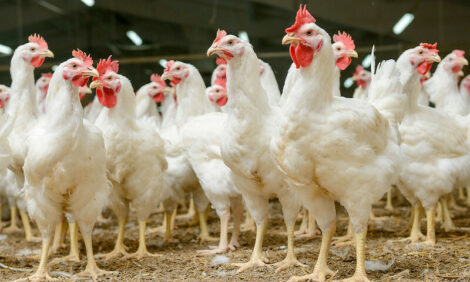



No Room to Increase Corn Consumption
US - The USDA projects that 13.245 billion bushels of US corn will be consumed during the marketing year that ends on 31 August 2011.That forecast is 60 million bushels below the July forecast, but is 179 million bushels above the record consumption in the previous year.
Corn exports during the year just ending are projected at a six-year low of 1.825 billion bushels.
Domestic feed and residual use of corn is projected at only five billion bushels, the smallest use in 15 years. Declining feed use of corn since 2005-06 reflects the increasing consumption of distiller's grains and other co-products of ethanol production.
Domestic processing use of corn during the current marketing year is expected to reach a record 6.42 billion bushels, 459 million more than consumed last year. The increase reflects an expected increase of 429 million bushels in the amount of corn used for ethanol and by-product production.
Based on the current USDA projection of the magnitude of old crop corn supplies on 1 September, 2011 and the projected size of the 2011 crop, corn consumption may have to be reduced by a small amount during the 2011-12 marketing year.
Stocks of 940 million bushels, imports of 20 million bushels, and production of 12.914 billion bushels provide for a 2011-12 marketing year supply of 13.874 billion bushels. The projected supply is 311 million bushels less than the supply for the current marketing year. Assuming that marketing year ending stocks cannot be reduced below five per cent of consumption, projected supplies would limit 2011-12 marketing year consumption to 13.213 billion bushels, leaving year ending stocks at 661 million bushels.
The actual supply of corn that will be available for use during the year ahead may differ from the current projection. The size of old crop stocks on 1 September will not be known until the USDA releases the quarterly Grain Stocks report on 30 September.
The size of the 2011 corn crop will not be known until the USDA releases the final estimate in January 2012. New forecasts, however, will be available in September, October, and November. Historically, the October forecast has been reasonably close to the final production estimate.
Assuming that available supplies will limit corn consumption during the year ahead, two important issues emerge. The first is, how will available supplies be allocated among the major consumption sectors? The second is, what price of corn will be needed to limit consumption to the level of available supplies?
The USDA's WASDE report released on 11 August projected a further decline in exports and domestic feed and residual use of corn during the year ahead. Domestic processing use is projected to increase as ethanol production continues to expand modestly.
US exports during the 2011-12 marketing year are projected at an eight-year low of 1.75 billion bushels. The projection reflects expectations that wheat will substitute for some corn feeding around the world. Wheat feeding outside the US is expected to increase by about 340 million bushels, or 8.2 per cent.
Sales of US corn for export during the 2011-12 marketing year have been relatively large. As of 4 August, the USDA reported that 327 million bushels had been sold for export. Sales were 68 per cent larger than those of a year earlier and represent nearly 19 per cent of the projected exports for the year.
All of the major importers have purchased larger quantities of US corn than at this time last year. With the large carryover sales from the current year, the 2011-12 marketing year will start with very large corn export sales on the books.
Domestic feed and residual use of corn during the 2011-12 marketing year is projected at 4.9 billion bushels, two per cent below the projection for the current year. If supplies were available, feed consumption of corn would likely be larger than the USDA projection.
The 2011 calf crop is expected to be only one per cent smaller than the 2010 crop, dairy cattle numbers exceed those of a year ago, and pork production has stabilised. Placements of broiler chicks are down about five per cent from those of a year earlier. Only a small increase in distillers grain production is expected, less sorghum will be fed, and wheat feeding may decline next summer. The USDA expects high corn prices to limit corn feeding.
The use of corn for ethanol and co-product production is expected to increase by a very modest 80 million bushels (1.6 per cent) during the year ahead. Ethanol production (consumption) will be influenced by total fuel consumption, gasoline prices, and perhaps the fate of the blender's tax credit.
Corn consumption during the year ahead could be rationed by weaker demand and/or higher corn prices. Ongoing economic and financial weakness speaks to some demand weakness, but the majority of any needed rationing will likely have to come from a continuation of high corn prices. What remains to be seen is how much rationing, if any, will be needed. Based on the way the growing season is ending, the size of the 2011 crop could be smaller than the August projection, requiring even more rationing than currently anticipated.








